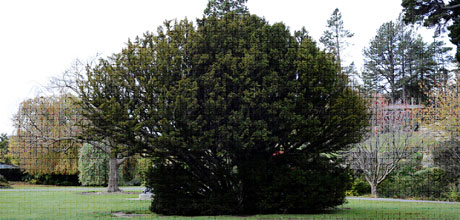Taxus baccata
This article was first published on 06 May 2011.

Taxus baccata
Life springs eternal from the ancient yew
English Yew is one of the longest living plants on earth. Indeed there are a number of specimens in Europe that are at least 1,000 years old.
The oldest known living example, the “Fortingall Yew”, is believed to be in the range of 3,000 to 5,000 years old, and is growing in the grounds of a church in the village of the same name, in Perthshire, Scotland. It is a tree which I have personally often admired in the heart of my old country, Scotland.
The yew or Taxus baccata is a tree that is steeped in Christian and Celtic mysticism and is an enduring symbol of long life. To this day, it is still found in churchyards throughout Western Europe in places such as Scotland, Ireland, England, Wales, France and Spain.
Yew wood was particularly sought after in Medieval Europe as the finest material for the construction of longbows. These bows were highly sought after as the weapon of choice at the time.
There is a fine and much loved example growing in Dunedin Botanic Garden, between the playground and Lindsay Creek.
It should also be noted that the tree is highly poisonous and no parts of it should ever be consumed.
This slow growing, medium to large evergreen tree, has dark green leaves, light brown scaly bark and red fleshy berries borne in autumn and winter.
Gordon Graham is a collection curator at Dunedin Botanic Garden.


